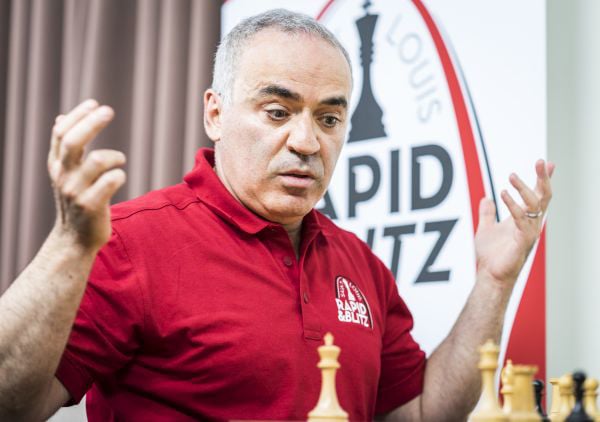
The 11th world champion Garry Kasparov narrated one such story which fascinated me, and which I promised to retell this week.

After the banquet, Herr Stumpf pronounced that guests were about to see something extraordinary; he had seen Kasparov perform a spectacular feat on television and now he would do it in person. Kasparov said he had no idea what Stumpf had in mind when he pointed to a long table on the other side of the room that he had passed on the way in. Stumpf explained that the table held a dozen chess boards, each set up to reflect a position from a historic game, spanning 150 years of play. In front of each board, a facedown card listed the date, place and names of the players.
Kasparov was being tested to see if he could identify each game by looking at the position on the board. Stumpf invited Kasparov to the table with the boards to ascertain whether he could identify the players by looking at the positions on the boards.
“When I remained in my seat, a look of fear crossed his [Stumpf’s] face,” Kasparov related. “He was clearly worried that he had gravely insulted me with his little surprise. I said, ‘I’m honoured you are interested in understanding the human mind, but I hope you will forgive me if I stay seated.’
“Stumpf looked forlorn. I was going to ruin his big moment! But then I said I couldn’t help glancing at the boards as we walked into the hall and that I would like to try to name all the games from here, in my chair across the room. So one by one I named the players, the tournaments, and even the next move of each game represented on the dozen boards.
“The effect was satisfactorily jaw-dropping for the guests, and looking back on it, I try to forgive myself a youthful display of the dramatic.”
Chess game
White: Hans Niemann
Black: Fabiano Caruana
Event: 2023 US Championship, St Louis, MO, USA, October 15
Type of Game: Italian Game, Classical Variation
1. e4 e5 2. Nf3 Nc6 3. Bc4 Nf6 4. d3 Bc5 5. c3 a5 6. O-O d6 7. Re1 Ba7 8. Nbd2 O-O 9. h3 Be6 10. Bb5 Ne7 11. d4 Ng6 12. Ba4 Nh5 13. Nf1 Nhf4 14. Ng3 exd4 15. Nxd4 Bxd4 16. cxd4 d5 17. e5 f6 18. Bxf4 Nxf4 19. Nh5 Nxh5 20. Qxh5 f5 21. f4 Qe7 22. a3 c5 23. Rac1 c4 24. Qd1 Kh8 25. Bb5 g5 26. b3 gxf4 27. bxc4 Rg8 28. Rc3 dxc4 29. Bxc4 Bxc4 30. Rxc4 Qxa3 31. Rc2 f3 32. e6 fxg2 33. Qe2 Qxh3 34. Qe5+ Rg7 35. Rcc1 Qh1+ 36. Kf2 Qh4+ 37. Ke2 f4 38. Rg1 Qg4+ 39. Kd2 f3 40. Ke3 Kg8 41. Rc2 Rf8 42. Rf2 h5 43. Qd5 Re8 0-1. White resigns.






